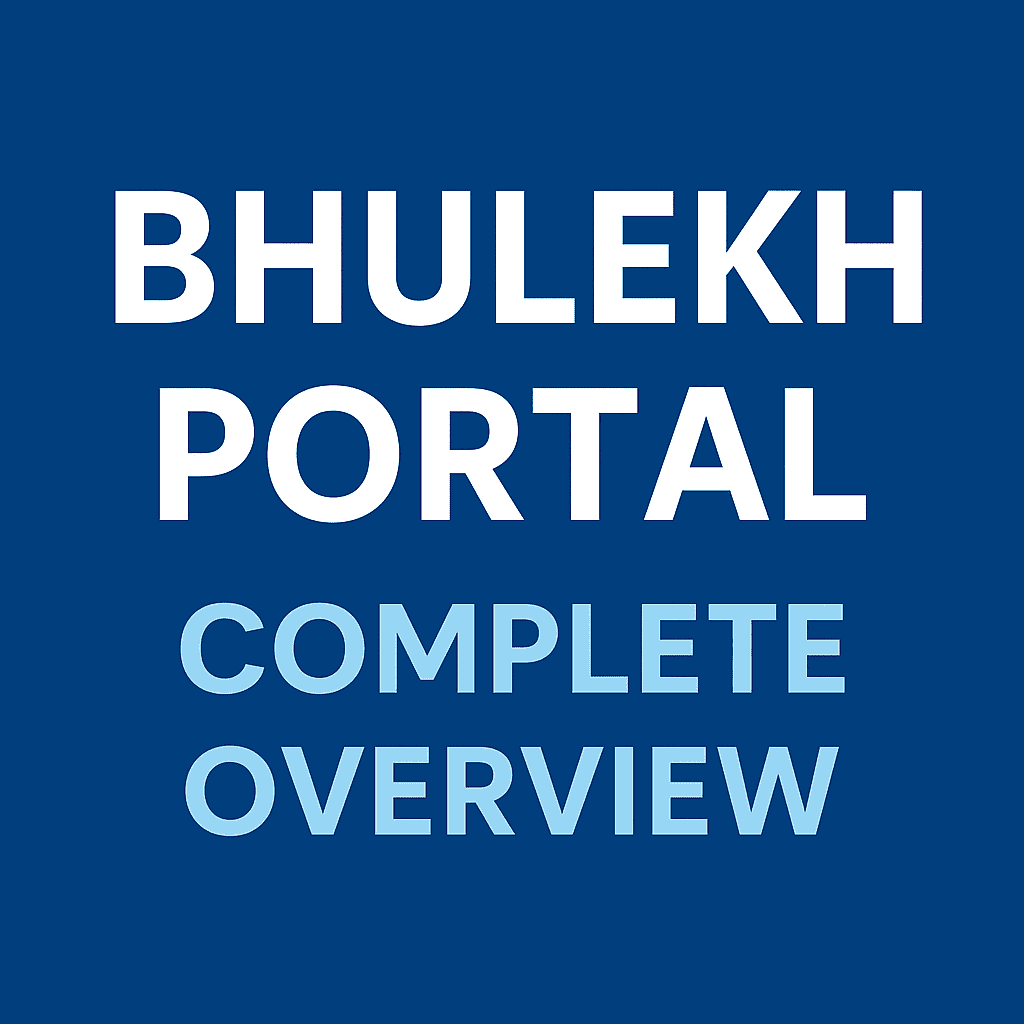In today’s fast-paced world, verifying land ownership and property details is no longer a tedious process. Thanks to digital initiatives by state governments, citizens can now access land records online from the comfort of their homes. One such system is the Bhulekh Portal, a government-run platform designed to provide transparent, reliable, and easily accessible land and property data.
This article provides a complete overview of the Bhulekh Portal—what it is, how it works, its benefits, step-by-step usage instructions, and answers to common queries. Whether you are a buyer, seller, farmer, or property investor, this guide will help you navigate the portal effectively and ensure that you can check your land records without hassles.
What is Bhulekh Portal?
The term “Bhulekh” is derived from two Hindi words: Bhu (meaning land) and Lekh (meaning record). The Bhulekh Portal is an official government website where citizens can view land records (RoR – Record of Rights), mutation details, ownership history, and property maps online.
While each state in India maintains its own version of the Bhulekh Portal (like Bhulekh Uttar Pradesh, Bhulekh Odisha, AnyROR Gujarat), the purpose remains the same:
- To make property records easily available
- To reduce fraud and disputes
- To promote transparency in land transactions
Key Features of the Bhulekh Portal
- Online Access to Land Records
View 7/12 extracts, Khatauni, Khasra, and other land documents instantly. - Owner and Survey Details
Check the registered owner’s name, survey number, and area of the land. - Mutation Status
Track whether a property ownership change (mutation) has been updated in records. - Property Maps (Bhu Naksha)
Access cadastral maps that show boundaries and plots clearly. - Rural and Urban Records
The portal provides separate options for rural and urban land data.
Benefits of Using the Bhulekh Portal
- Time-Saving: No need to visit revenue offices for basic land information.
- Transparency: Public access to government-verified data reduces corruption.
- 24/7 Availability: You can check details anytime, anywhere.
- Useful for Legal & Loan Purposes: Banks and courts accept Bhulekh extracts as valid references.
- Helps Prevent Fraud: Buyers can verify the seller’s ownership before making payments.
Step-by-Step Guide to Check Land Records on the Bhulekh Portal
Step 1: Visit the Official Website
Go to your state’s official Bhulekh website. For example, Uttar Pradesh’s is upbhulekh.gov.in, Gujarat’s is anyror.gujarat.gov.in, and Odisha’s is bhulekh.ori.nic.in.
Step 2: Select Your Location
Choose the District, Tehsil, and Village where the land is located.
Step 3: Choose the Search Option
Most portals offer multiple search methods:
- By Khasra/Survey Number
- By Khata/Account Number
- By Owner’s Name
Step 4: Enter the Details
Fill in the required details accurately. Ensure spellings match government records.
Step 5: Verify with Captcha
Enter the captcha code shown on the screen to verify you’re a human user.
Step 6: View the Land Record
The system will display the Record of Rights (RoR) with details like owner name, land classification, plot size, and past transactions.
Step 7: Download or Print
You can download the record in PDF format or print it for your records.
Bhu Naksha – Property Mapping Feature
Most Bhulekh portals are linked with the Bhu Naksha (digital cadastral mapping system). This tool provides a visual representation of land plots, including boundaries, adjacent plots, and total area. It is particularly useful for resolving disputes and understanding the exact location of a property.
Common Mistakes to Avoid
- Entering wrong spellings of names or villages can lead to “No Record Found” errors.
- Not checking the latest mutation may lead to outdated ownership details.
- Relying only on online data—always verify with an official certified copy for legal matters.
Frequently Asked Questions (FAQs)
Q1: Is the Bhulekh Portal service free?
Yes, checking land records online is free. However, certified copies from revenue offices may require a nominal fee.
Q2: Can I use the Bhulekh Portal to transfer property ownership?
No, the portal is for viewing records only. For ownership transfer (mutation), you must apply at the Tehsil office.
Q3: Are these records legally valid?
They are valid for reference, loan applications, and preliminary verification, but certified copies are required in legal proceedings.
Q4: How often is the data updated?
It depends on the state. Many portals update data daily, but some may take longer.
Q5: Can I see land maps for my property?
Yes, if your state’s portal is linked with Bhu Naksha, you can view and download maps.
Conclusion
The Bhulekh Portal has transformed how citizens access land records in India. By bringing transparency, reducing paperwork, and saving time, it has empowered landowners, buyers, and farmers alike. However, while the online portal is a valuable tool, it should be complemented with certified documents for legal purposes.
Whether you are buying a property, applying for a loan, or simply confirming ownership, Bhulekh Portal is your go-to platform for accurate, up-to-date land information.
